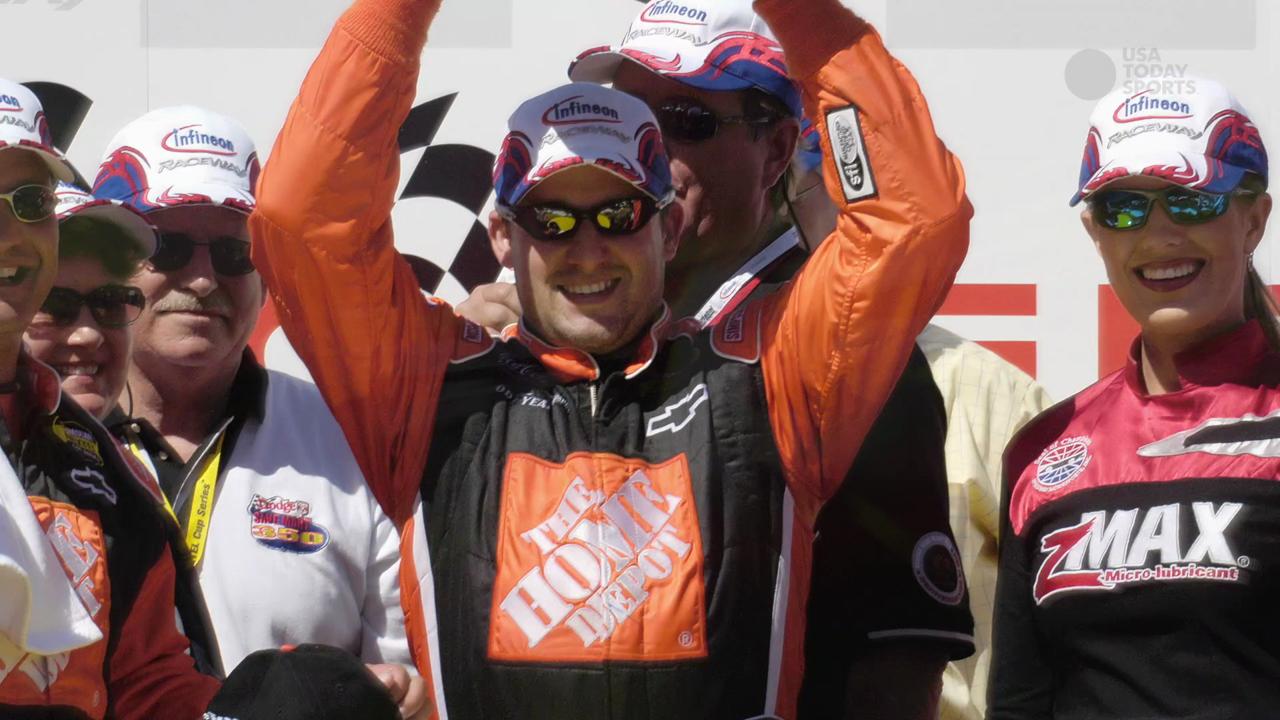Gluck: Strategy becomes paramount in Sonoma Sprint Cup race

SONOMA, Calif. — When Kyle Busch pitted with 11 laps to go in last year’s Toyota/Save Mart 350 at Sonoma Raceway, Fox Sports analyst Larry McReynolds shook his head in the TV booth.
“I said, ‘They’re done,’” McReynolds recalled this week. “They will never get back to the front.”
Busch lined up seventh on the restart, which made McReynolds feel confident about his prediction. But surprisingly, Busch worked his way through the field on fresh tires and took the lead with five laps to go.
“They proved how important tires are,” McReynolds said of Busch and the No. 18 team’s victory last season.
That type of strategy call has become a major factor in the outbreak of Sonoma parity over the last decade. Busch is the only repeat winner in the last 11 years of Sonoma races — this after Jeff Gordon and Tony Stewart combined to hog seven of nine victories during one dominant stretch.
As crew chiefs have realized how much strategy can factor into the outcome of road races, it’s made it less likely for one driver to crush the field in a rout.
“It’s become such a strategy race on top of the pit box,” Denny Hamlin said this week. “Back in the day, if I look back at old road-course races, I don’t remember strategy being a key part of it. The fast guys would be up front and the slow guys would be in the back.
“Now it’s like, ‘Oh, well AJ (Allmendinger) is running 15th — but don’t worry, the top 14 have got to pit.’ I think the strategy has mixed things up to where there’s some different winners.”
McReynolds, a former crew chief, said teams have likely been thinking about their Sonoma strategy for the last two weeks, including during the off week for the Sprint Cup Series.
Teams used to do whatever they could to save fuel and run a race with just two pit stops. As soon as they were in the pit window, teams would call their drivers to pit road.
“You didn’t have to be a rocket scientist to figure out how guys were going to run this race,” McReynolds said.
But in recent years, tires have become more important. Now it’s not only about saving gas; just look at Busch’s late pit stop last year for proof.
“I don’t know that you can win this race by doing it on two stops,” McReynolds said. “You can easily do two stops on fuel, but I think you’re going to have to make three stops.”
Teams might have to pit for tires even sooner than normal on Sunday, where temperatures are expected to reach the low 90s. That should make for a slippery track and increase tire wear, potentially setting the stage for additional lead changes.
Joey Logano recently rewatched last year’s Sonoma race and noted the two fastest cars — Kurt Busch and Jimmie Johnson — both failed to win.
“Strategy comes into play a lot,” Logano said. “… I’m not saying it takes luck — because I believe you create your own luck — but you’ve got to have a couple circumstances go your way.”
Gordon, a five-time Sonoma winner who is now a Fox Sports analyst, listed a number of reasons for the increase in road course parity.
Unpredictable cautions can make having the fastest car a disadvantage, Gordon said. Other causes include increased tire falloff, double-file restarts and pure luck.
And then there’s another major factor: The spread of road course talent throughout the field.
“I was hoping to see some more cars go off course (as a viewer watching practice)," Gordon said Saturday. “I wanted to see guys struggle. I want to see cars stepping out, sliding. They made it look too darned easy, to be honest. I think it's a testament to the teams and the drivers that are out there.”
Follow Gluck on Twitter @jeff_gluck